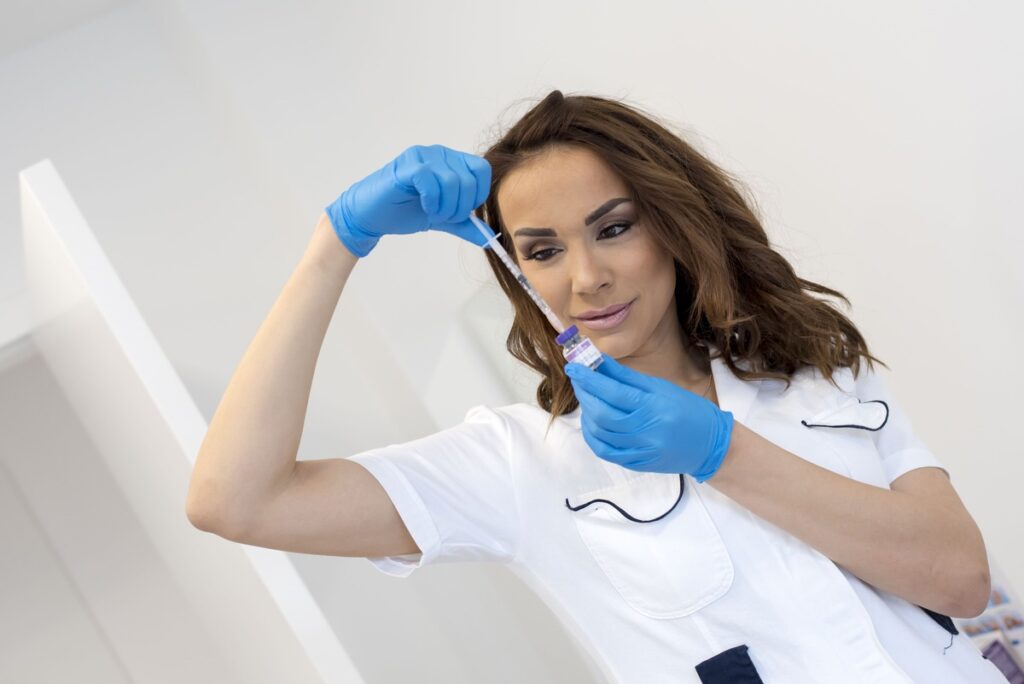Botox and dermal fillers are two of the most popular non-surgical cosmetic procedures used in cosmetic medicine to reduce the appearance of wrinkles and enhance facial features. Five million people receive Botox injections each year.
Over 8 million people received a Botox injection and four million filler procedures were performed in the US in 2023.
Botox works by paralyzing muscles to smooth out wrinkles. Fillers add volume to cheeks, lips, and other areas. Any patient looking for cosmetic enhancements should stay informed about Botox innovations and the latest filler treatments.
This article aims to explore recent advancements in Botox injections and Filler treatments and their benefits and to help you understand the importance of staying informed about the latest innovations in Botox and fillers.
Recent Innovations in Botox
New Techniques and Technologies
- Micro-Botox
- Advanced Botox technologies
- New delivery methods
- Micro-botox is the injection of Botox into the dermis in smaller doses which leads to a subtle and natural-looking effect.
- New delivery methods – microneedle patches that deliver Botox without needles.
- Advanced Botox technologies include:
- Ultrasound-guided injections – allow for more precise placement of Botox.
- Nanoneedle – an ablative skin treatment that uses a pen-like device with small cones to create microchannels in the skin.
Latest Botox Products
- DaxibotulinumtoxinA (Daxi) is among the new Botox formulations. It has a longer duration of effect compared to the typical three to four months of traditional Botox.
- DAXXIFY – a neuromodulator that got FDA approval in 2022 to reduce facial lines and wrinkles. It contains a stabilizing peptide that allows it to increase its effectiveness by binding to the nerve surface.
- Alluzience – a botulinum toxin type A product launched in June 2022. It has a faster onset of action and the results may last longer than standard Botox.
Clinical Studies and Research
- Therapeutics
A clinical trial by the American Migraine Foundation found that Botox injections reduce the number of headache days per month on average by about 50%.
They are still researching excessive sweating (hyperhidrosis) and even muscle spasms.
- Longer-lasting results
New formulations of Botox such as DaxibotulinumtoxinA, DAXXIFY and Alluzience are being studied to extend their effectiveness.
- Improved safety profiles
Researchers are evaluating new delivery methods that could enhance the safety profile of Botox treatments. They include:
- Ultrasound-guided injections
- Nanoneedle
- Micro-Botox
Recent Innovations in Fillers
New Filler Materials and Formulations
Hyaluronic acid fillers

- Examples include Vycross and Resilient Hyaluronic Acid (RHA).
- Hyaluronic acid fillers have been improved to extend their longevity to over 18 months and integrate better with surrounding tissues.
Poly-L-lactic acid (PLLA) fillers

- Example: Sculptra
- PPLA fillers stimulate the body’s collagen production and restore volume and fullness to the face. Its effects can last up to 2 years.
Lidocaine-containing fillers

- Examples: Juvederm, Restylane (lidocaine versions)
- Lidocaine helps reduce discomfort and pain during injections enhancing patient comfort and satisfaction.
Calcium hydroxyapatite (CaHA) fillers

- Example: Radiesse
- Stimulates collagen production which allows it to provide long-lasting volume correction.
Cutting-Edge Techniques in Filler Applications
- Filler application techniques that use micro-cannulas (thin, flexible tubes) to inject fillers to minimize trauma and bruising compared to traditional needles.
- Advanced filler methods – using MD Codes technique and 3D mapping to enhance the accuracy of filler placement.
- Combination treatments where filler treatments are used together with other modalities such as Botox, lasers, radiofrequency, and threads.
Safety and Efficacy Improvements
- New guidelines and best practices
These new guidelines about filler safety improvements aim to provide patients with effective filler treatments by minimizing risks and optimizing treatment outcomes. They are supposed to achieve it by emphasizing filler best practices such as proper injection techniques, product selection, and patient education.
- Improved filler biocompatibility
Manufacturers have developed fillers with increased biocompatibility to reduce complications and promote integration with the body’s tissues
- Enhanced efficacy
Development of longer-lasting and more natural-looking filler formulations such as DaxibotulinumtoxinA, DAXXIFY , and Alluzience.
Combination treatments and precise injection techniques using Ultrasound-guided injections.
Conclusion
Botox works by paralyzing muscles to smooth out wrinkles. Fillers add volume to cheeks, lips, and other areas. Any patient looking for cosmetic enhancements should stay informed about Botox innovations and the latest filler treatments.
Ensure you find a board-certified dermatologist or plastic surgeon with enough experience and a great reputation. Go through their patient reviews, research their qualifications, and ask all the necessary questions including how they approach patient safety.

